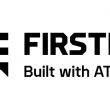Truly a killer app
Imagine for a moment that you’re a school principal. Now imagine that you’ve just received the call that no school administrator ever wants to receive, the one from a frantic parent informing you that her child — one of your students — didn’t get off the school bus at the appointed stop and hasn’t been heard from since school recessed for the day.
Now imagine that every school bus in your district is equipped with GPS and video technology which, when linked with a mapping application, lets you view the footage from every stop the bus made that day. You are able to confirm that the child did not exit the bus at the appointed stop. However, more importantly, you are able to confirm that he did exit the bus three stops earlier — a stop that happens to be a block from where his best friend lives.
Such capability exists today. Indeed, a cornucopia of video applications already are in the marketplace that promise to let those who work in the public sector — education, police, fire, emergency medical, 911, utility and transportation — serve their constituents far more effectively than ever before. In fact, the market for video-surveillance equipment and applications is exploding. It is expected to grow to $10 billion by next year, a 136-fold increase over the past decade, said Rich Feeney, technical sales specialist for video system vendor Inscape Data.
While the hype surrounding video is well founded, it is diminished considerably when one contemplates the realities surrounding its use. In the case of the school-bus example above, governance and privacy issues must be considered, said Rick Burke, managing partner of wireless communications consultancy Televate.
“There are regulatory concerns in any jurisdiction over the deployment, storage and use of video,” Burke said. “‘Big Brother is looking over our shoulder,’ is a concern of any city council on behalf of its citizens.”
According to Burke, governments have a much bigger obligation to protect the privacy of its constituents than commercial entities.
“If you go into somebody’s store, they have different capabilities, [because] they’re not bound by the same obligations that a government would have,” Burke said. “For example, in the District of Columbia, they can’t put video cameras into police cars for recording traffic stops because it hasn’t been approved by the city council.”
How governments meet that obligation varies widely from jurisdiction to jurisdiction, according to Ron Merchant, CEO of video surveillance system vendor Eye3Data.
“We have integrated a wireless microphone into our solution,” Merchant said. “When the police officer approaches you, in some states they are mandated to tell you that your voice is being recorded. In other states, they don’t have to. So state by state, there is a difference in how you want to approach this.”
Governance is just the tip of the iceberg when it comes to the challenges of making the most effective use of video systems, according to Jasper Bruinzeel, vice president of marketing and sales for wireless video solutions vendor CelPlan Technologies.
“If it’s not designed correctly, video truly can be a killer application for a wireless network,” he said.
Though wireless broadband has been around for a while, most wireless networks traditionally have been designed for e-mail and Internet browsing but not video, which generates exponentially more packets that are inherently more time sensitive.
“In video, if packets get lost or delayed, you’ll see pixilation or freezing of the screen,” Bruinzeel said. “So, video is very sensitive to latency and delays.”
Video quality is another significant concern, according to Paul May, business development manager for Tyco Electronics Wireless Systems (formerly M/A-COM).
“There should be some sort of quality assurance placed on that network because video surveillance isn’t very effective — or worthy of being used as evidence in court — when you start dropping frames, because you’re running other applications on your network and not protecting your bandwidth,” May said.
He added that resolution is a related concern. The clearer the images on the screen, the more effective the footage is in court. May recommended the 4CIF (4 times the common intermediate format, or 704 × 576 pixels) resolution standard, which commonly is used in video conferencing and is now starting to be adopted for broadcast television, he said.
May also recommended video capture speeds of 10 to 15 frames per second. “Typically, full-motion video is going to be somewhere between 24 and 30 frames per second,” he said. “Normally, you don’t need that for most video-surveillance purposes. Anywhere from 10 to 15 frames is fairly smooth.”
He added that speeds below 10 frames per second result in video that’s “herky jerky,” which makes the footage more tedious to view. “And, for evidentiary reasons, you … may not want to go that route,” May said.
Even at 10 frames per second, video footage takes up a lot of bandwidth. For that reason, Merchant recommends that any agency thinking about taking the plunge should first develop a thorough capacity plan.
“You have to look at the video stream of each individual camera, because every camera has a different rate,” he said. “Some cameras are very bandwidth intensive.”
May added that communications technicians often “have to be clever” in terms of where they place network nodes to maximize bandwidth.
Compression is another tool in the bandwidth-optimization toolkit. Indeed, it is the key to efficient transport of both audio and video, according to Merchant. “When you’re transporting data across miles and miles of a wireless network, you have to have some optimization of the packet size,” he said.
Unfortunately, there is no clear-cut way to do this, as there are several compression schemes available, each with its own pluses and minuses. For instance, the H.264 codec, which enhances the video compression provided by the MPEG4 codec — used in cellular phones and other portable wireless devices — is more efficient in terms of streaming video, but the quality of the video is compromised, Merchant said. Nevertheless, in situations where bandwidth is limited — as typically is the case — H.264 is Merchant’s choice.
“If we had an abundance of bandwidth, this would be immaterial — we’d just use MPEG4,” he said. “But because bandwidth is limited, you’re always trying to maximize the use of it.”
Another technique that Eye3Data uses in its video installations to squeeze the most from clients’ available bandwidth is something Merchant calls “intelligent streaming.” Video that will be stored is compressed using the MPEG4 codec, while video that will be streamed is compressed using the H.264 codec.
Perhaps the biggest question surrounding video surveillance concerns how to efficiently observe the overwhelming amount of information such systems generate. Video-analytics systems can help, according to Bruinzeel. Such systems trigger alerts when they detect suspicious or unusual activity, such as when a traveler walks away from a piece of luggage in an airport, when a person intrudes upon a restricted area or moves in the wrong direction — or stops moving for a certain amount of time.
For example, the Pennsylvania Turnpike uses video analytics to identify when traffic stops moving, “because that usually means an accident has occurred,” said May, whose company installed the camera system.
However, Bruinzeel cautioned that such systems aren’t foolproof. “The operator always has to take a second look to determine whether action is required,” he said.
Bruinzeel added that video-analytics systems typically don’t work well with pan/tilt/zoom cameras because the system can’t “learn” the background — essential to the task of determining whether something unusual or suspicious has occurred — if the camera is moving, especially if it is in “tour” mode.
Despite the associated challenges, the demand for video surveillance systems “absolutely is there,” Merchant said.
“In fact, the demand is far greater than the supply today. This is a growth market.”
Related Stories
- Taking a byte out of crime
- A better way to spy
- The moment of truth
- Caution is needed when considering video
Buying Into the Hype
Video surveillance market growth has exploded over the past decade
2000: $73 million
2007: $4 billion
2010: $10 billion (est.)
Source: Inscape Data
















